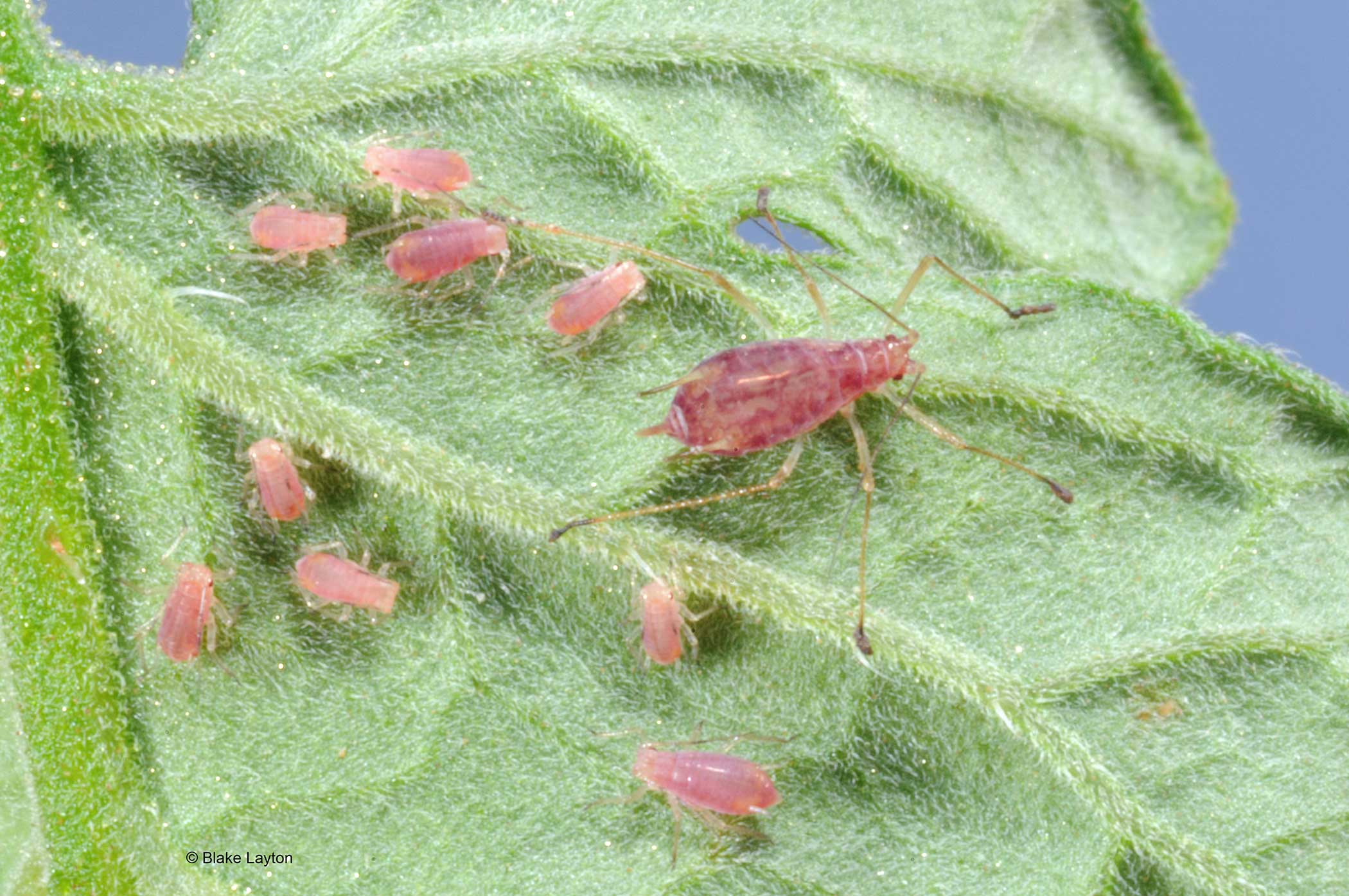Potato Aphids | Vol 3, No. 13
Related News
May 12, 1997
March 17, 1997

Order: Hemiptera
Family: Ahididae
Those big red aphids on the tomato plants are probably potato aphids. This doesn’t mean potato aphids are always red. Sometimes they are green, and sometimes an infestation will consist of a mixture of green and red aphids, but when they are on tomatoes, potato aphids are usually pink or red. Potato aphids have a couple of hundred host plants, including many garden vegetables such as kale, spinach, turnips, lettuce, tomatoes, eggplant, and, of course, potatoes. As with most aphids, potato aphids can reproduce without mating, a phenomenon known as parthenogenesis. The females do not lay eggs; they simply give birth to small aphid nymphs. In colder areas of the country, males occur in the fall and after mating, the females lay eggs, and this is the overwintering stage. Males are rare here in the South, and overwintering occurs through “normal” parthenogenetic development on winter host plants.
Control: Don’t be too hasty to spray your tomatoes for aphids. Low numbers of aphids cause little or no harm to healthy tomato plants, and low populations are often controlled by beneficial insects and diseases. Fruitworms, hornworms and stink bugs are usually the most serious pests of tomatoes. If heavy aphid infestations begin to cause excessive honeydew or distortion of leaves and terminals, spray with insecticides containing acetamiprid or malathion.
See page 2 and pages 12-14 of Extension Publication 2347, Insect Pests of the Home Vegetable Garden for more information on aphid control.
Blake Layton, Extension Entomology Specialist, Mississippi State University Extension Service.
The information given here is for educational purposes only. Always read and follow current label directions. Specific commercial products are mentioned as examples only and reference to specific products or trade names is made with the understanding that no discrimination is intended to other products that may also be suitable and appropriately labeled.
Sign up to receive Bug's Eye View.